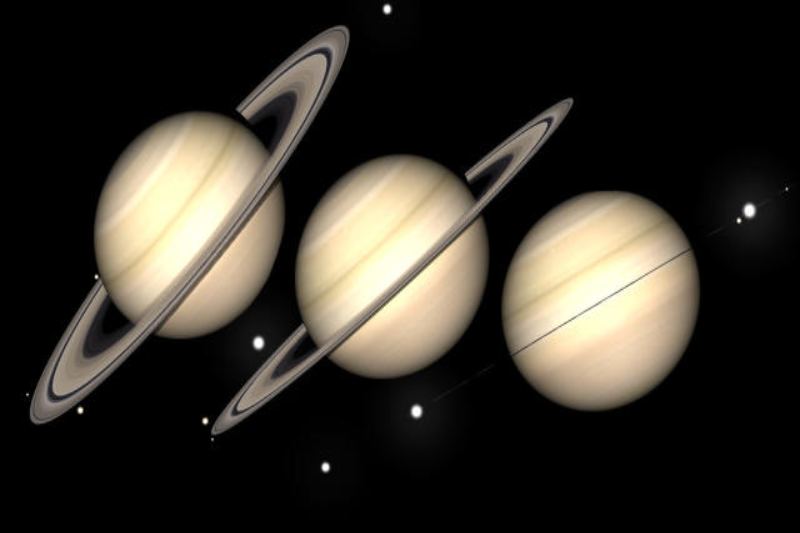
Within two years, Saturn's rings will 'disappear'
Over the next 300,000 years, Saturn’s exquisite ring system will vanish entirely, but for the next two years, a comparatively uncommon celestial event will give us a sneak peek.
One of nature’s wonders is the planet that is sixth from the Sun. It is not only the “Moon King” of the solar system today, but its enormous, brilliant rings have mesmerized humans for ages.
NASA spacecraft such as Cassini, Pioneer 11, and the Voyager probes provided breathtaking detail of Saturn’s rings. They have also been imaged by Hubble and JWST telescopes. On a clear night, though, anyone with a small backyard telescope or even a pair of binoculars can see them.
That will, however, alter as March 2025 draws near. Over the next fifteen months, the magnificent rings will progressively disappear from view.
You see, Saturn has an axis tilt, just like Earth does. It thus experiences seasons as it revolves around the solar system, with the northern hemisphere facing more directly toward the Sun for half of the trip and the southern hemisphere facing more directly toward the Sun for the remaining portion. The planet’s rings have the same pattern because they are in line with Saturn’s equator.
On Saturn, the northern summer started in May 2017. The ringed planet’s summer has faded in the years since, and during the next fifteen months, it will be getting closer to its northern fall equinox.
At that point, the planet’s rings appear to disappear, causing those of us on Earth to witness a “ring-crossing event.”
Of course, the rings won’t be gone entirely. It’s just that you’re looking at them from the outside. From our vantage point, the rings will be invisible because they are only about one kilometer thick in comparison to Saturn’s 108,728 km polar diameter.
A few of these ring-crossing events may group together as a result of the relative motions of Saturn and Earth around the Sun. observed this in the middle of the 1990s, during the ring-crossings that occurred in May 1995, August 1995, and February 1996.
However, ring-crossings are relatively uncommon events between these clusters.
September 2009, more than 14 years ago, was the last one. The next one after March 2025 won’t be visible until October 2038, at which point another cluster will begin, with follow-up events taking place in April and July of 2039.
Todd Barrow is rapidly carving out his place in the country music spotlight. Born and… Read More
Bangalore, often dubbed the Silicon Valley of India, is a city that seamlessly blends technological… Read More
Instagram's latest update includes a new feature called "Blend." With the use of this feature,… Read More
Dr. Rema Vassar is a leading advocate for equity in education, particularly in ensuring that… Read More
Exploring the world of guitar music is a journey into the heart of creativity, where… Read More
Marine construction is a vital field that shapes coastal infrastructure, energy production, and global connectivity.… Read More